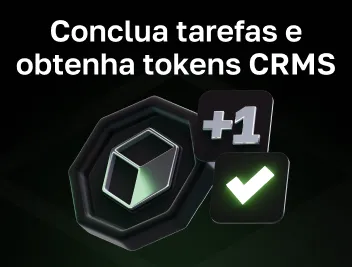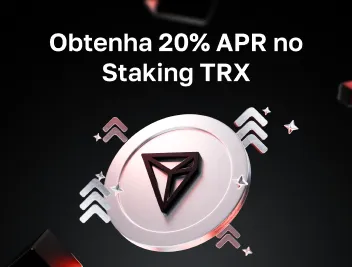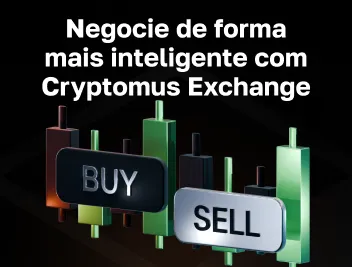
O Polygon é um bom investimento em setembro de 2025?
Todo investidor de criptomoedas enfrenta um certo nível de dúvida ao decidir em qual moeda vale a pena investir. Hoje, estamos discutindo o potencial do Polygon, considerando sua história, riscos e benefícios.
Polygon como Investimento
POL, o token nativo do Polygon, tornou-se um jogador chave nas criptomoedas ao resolver os problemas de velocidade do Ethereum. Como uma solução de camada 2, oferece transações mais rápidas e baratas, aproveitando a segurança e o ecossistema do Ethereum. Isso atrai desenvolvedores que criam dApps e querem evitar as altas taxas do Ethereum. Com o crescimento do Ethereum, especialmente com as atualizações para a versão 2.0, o Polygon está pronto para ser um parceiro vital, provavelmente atraindo mais projetos e usuários ao longo do tempo.
Para os investidores, o crescimento do Polygon parece promissor, mas não é isento de riscos. Seu sucesso depende da adoção contínua e da permanência do Ethereum no topo. Embora o Polygon seja popular no DeFi e NFTs por sua eficiência, a concorrência crescente de outras soluções de camada 2 e blockchains pode afetar sua posição de mercado. No entanto, com parcerias inteligentes e um ecossistema forte, o Polygon continua sendo uma opção atraente para aqueles que planejam investir em ativos digitais confiáveis.
Histórico de Preços do Polygon
Para seu conforto, preparamos uma visão detalhada ano a ano do histórico de preços do Polygon:
-
2019: O POL estreou em abril de 2019, com um preço abaixo de $0,003. Nos primeiros dias, o token teve pequenos aumentos, mas permaneceu em torno de $0,01 a $0,02.
-
2020: O Polygon chamou a atenção de projetos DeFi e dos primeiros usuários do Ethereum que buscavam transações mais baratas. No entanto, o preço permaneceu baixo durante a maior parte do ano, com uma média de cerca de $0,01.
-
2021: O valor do POL disparou, tornando-se uma solução de camada 2 preferida, alcançando um pico de $2,92 em dezembro de 2021.
-
2022: Os preços caíram em relação aos máximos do início do ano, atingindo cerca de $0,71 durante a queda do mercado. No entanto, o Polygon continuou a expandir seu ecossistema, firmando parcerias com grandes marcas. No final do ano, o POL foi negociado entre $0,80 e $1,00, mostrando tanto força quanto os efeitos das mudanças de mercado.
-
2023: Os preços oscilaram entre $0,34 e $1,28, principalmente reagindo às mudanças do mercado e às atualizações contínuas do Ethereum. O ano terminou dentro dessa faixa, enfrentando um mercado mais competitivo.
-
2024: O POL foi negociado por cerca de US$ 0,3127. O preço mais baixo refletiu mudanças mais amplas no mercado, mas a plataforma e o ecossistema do Polygon permaneceram sólidos.
-
2025: O Polygon está a negociar ligeiramente abaixo de US$ 0,29 no início de setembro, mostrando sinais de vida após um longo período de lateralização. O lançamento de novas stablecoins como USDT0 e XAUt0 na rede reforçou o seu papel em pagamentos e DeFi, enquanto dados on-chain mostram mais atividade com stablecoins e interesse crescente por parte dos traders. Tecnicamente, o POL rompeu um nível-chave de resistência, e os indicadores sugerem que os compradores ainda têm o momentum a seu favor, criando a possibilidade de novos ganhos caso o rali se sustente.

Devo Comprar Polygon Agora?
Comprar Polygon parece valer a pena considerar agora, já que tanto o seu ecossistema como a ação do preço estão a evoluir na direção certa. A adoção de stablecoins está a dar mais utilidade no mundo real à rede, e a estrutura de mercado aponta para uma reversão de tendência em vez de apenas mais um bounce de curta duração. Embora exista sempre espaço para uma correção, a combinação de procura crescente e sinais altistas torna este um cenário promissor para investidores à procura de crescimento. Consulte aqui para previsões mais detalhadas do preço do Polygon.
O Polygon é Bom para um Investimento de Longo Prazo?
O Polygon se estabeleceu como uma solução de camada 2 importante para o Ethereum, abordando a escalabilidade e reduzindo os custos de transação. Suas parcerias estratégicas com grandes empresas como Meta, Nike e Mastercard fortaleceram seu ecossistema e adoção. Todos esses pontos tornam o Polygon adequado para investimentos de longo prazo, embora certos desafios devam ser levados em conta.
A Comissão de Valores Mobiliários dos Estados Unidos (SEC) examinou o MATIC, alegando que ele funciona como um contrato de investimento, o que pode afetar seu futuro nos mercados. Além disso, o mercado de criptomoedas é altamente volátil, e o POL já experimentou grandes oscilações de preço no passado.
Assim, enquanto os avanços tecnológicos e as parcerias do Polygon apresentam oportunidades promissoras, os investidores devem considerar cuidadosamente os riscos regulatórios e a volatilidade do mercado ao avaliar o POL como um investimento de longo prazo.
Quando Devo Vender Meu POL?
Decidir quando vender suas participações em Polygon (POL) exige uma análise cuidadosa de vários fatores:
-
Sinais de Mercado: Fique atento às ferramentas técnicas para insights de mercado. No momento, os indicadores estão mistos: alguns apontam para uma possível leve recuperação, enquanto outros indicam uma possível estagnação. A expectativa de recuperação está mais elevada devido à tendência de alta que geralmente segue o halving no mercado.
-
Cenário da Indústria: Mantenha-se atualizado sobre o mercado mais amplo de criptomoedas e as notícias específicas do Polygon. Eventos importantes, como novas regulamentações ou avanços tecnológicos, podem influenciar o valor do POL.
-
Objetivos Financeiros Pessoais: Certifique-se de que a venda esteja alinhada com suas metas financeiras e seu nível de risco. Se o POL atingir o preço desejado ou sua estratégia mudar, pode ser o momento de vender.
-
Investimentos Balanceados: Verifique regularmente a composição de sua carteira. Se o POL tiver uma participação muito grande, vender uma parte pode ajudar a distribuir o risco e manter o equilíbrio.
-
Considerações Tributárias: Entenda as regras tributárias para a venda de criptomoedas em sua região. Consultar um especialista pode ajudar a entender os possíveis impostos.
Considerando esses fatores, você pode tomar uma decisão mais informada sobre quando vender suas participações no POL.
Esperamos que você tenha achado este artigo útil! Respondemos a todas as suas perguntas? O que você acha do Polygon como investimento? Deixe-nos saber nos comentários abaixo!
Avalie o artigo








comentários
0
Você precisa estar logado para postar um comentário